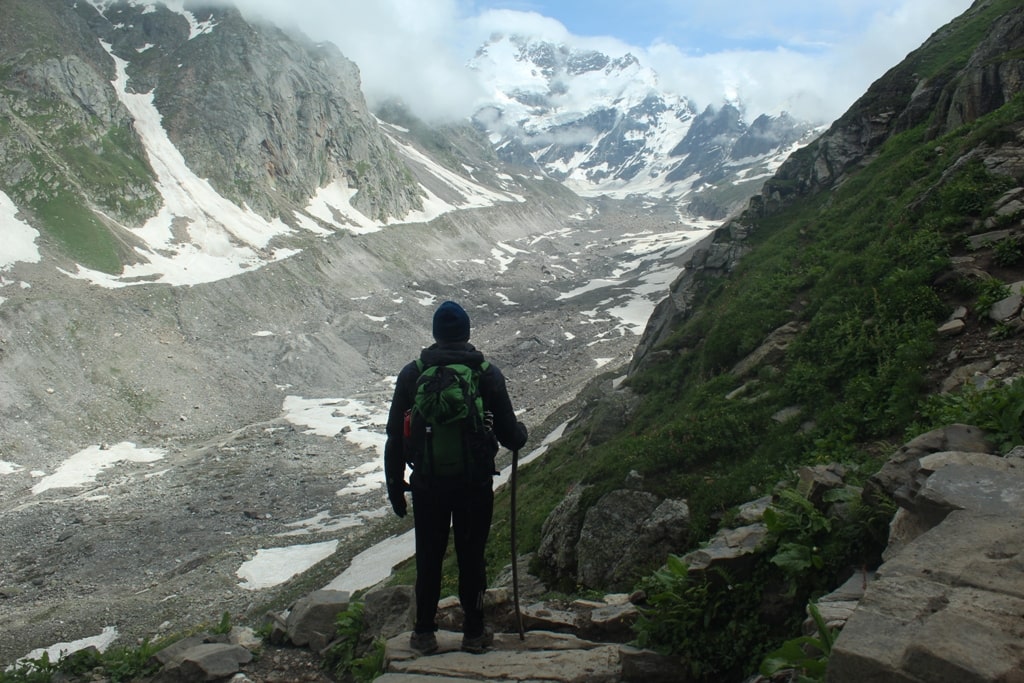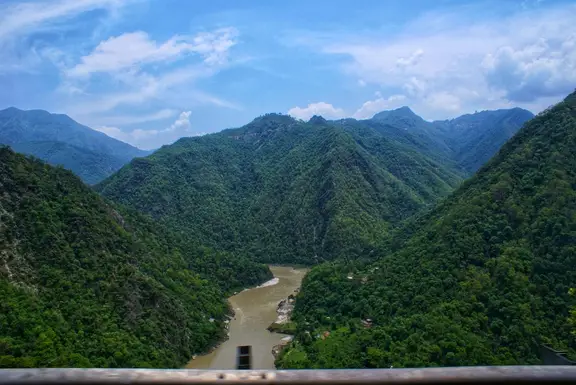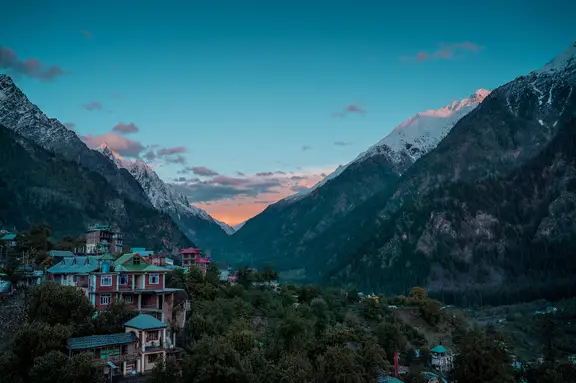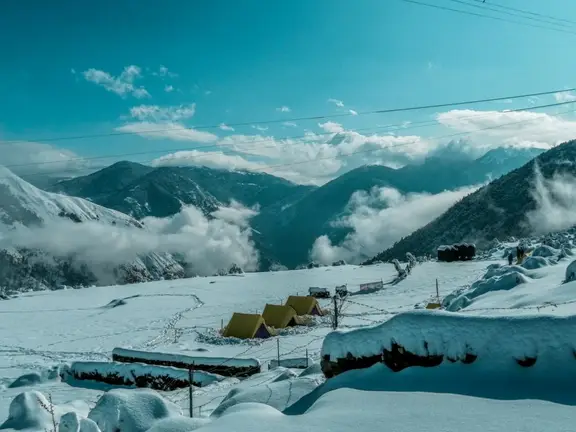How to avoid Knee Injuries During Your Trek?
Trekking is one of a kind experience. Beneficial for the body, liberating for the mind and healing for the heart – it’s an activity you fall irrevocably in love with from the very get-go. But unfortunately, like every good thing in our life, trekking too has its shortfalls. Time spent on the rocky trails of mountains can give rise to the injury, trekkers know all too well as Knee Pain. However, armed with proper knowledge and a few tips and tricks to resist knee injuries, one can continue enjoying a lifetime of quests in the dreamy landscapes of Mother Nature.
Why Do Knees Tend To Hurt During A Trek?
A knee injury is probably the most common trouble faced by trekkers – both novice and seasoned trekkers alike. The reason behind the malady is no rocket science though. Knee injuries are caused by the overuse of or excessive stress or strain on your knees. Coined as the Hiker’s knee, the problem aggravates while trekking downhill. Our knees endure stress even when we are merely walking the stairs in our very own homes so you can imagine the amount of stress exerted on them while traversing through rocky, uneven terrains.

We are quick to blame ourselves when we find our body lacking in some way but the truth is trekking can be undeniably exhaustive for the knees. The hike downhill is typically more physically taxing as the leading knee not only absorbs the full brunt of your body weight but also your backpack’s weight and additional forces of your descent.
A study mentions that the force on your knee joint is 7 to 8 times your body weight when climbing downhill. Therefore it’s no wonder that your knees are sore after the journey. The cause behind the issue may be simple but if proper steps are not taken to avoid such injuries, it might later give away to serious knee problems.
Exercises That Help Strengthen Legs & the Lower Body
These are some widely practised exercises that can help prepare and strengthen your legs for your days of adventure in the mountains.
- Running: This one’s almost a given. Easy to do and very effective, running three to four times a week builds your calf muscles and strengthens your lower body. Additionally, it works wonders for your stamina too.
- Lunges: The exercise targets huge sections of the lower body and works to shape and strengthen them. Incorporate both sides and forward lunges in your routine too.
- Squats: Contrary to popular belief, squats do much more than tone your legs. The exercise works up every muscle of your leg effectively. Try different kinds of squats such as sumo squats and jump squats for better results.
- Leg Lifts: You may practise leg lifts while lying, sitting, or standing; they reap the same benefits. Not only will the aforementioned exercises help strengthen your lower body muscles but they will also increase your build, stamina, balance – all of which are crucial for a smooth trekking experience. If you want to include more exercises to your routine feel free to check out YouTube for reference. Just remember to work your legs for at least 20 minutes on a regular basis.
Essential Guidelines To Follow During The Trek
Use A Trekking Pole:
There are many who choose to avoid using a trekking pole believing it be redundant. And yet every seasoned trekker swears by these tiny life-saving devices. The apparatus helps distribute your weight evenly to various parts of the body – from your arms to your core to your glutes. Trekking poles can be used to hoist yourself up in tricky uphill climbs and are also known to improve speed and posture while climbing downhill. Additionally, trekking poles also provide excellent balance and support on snowy, slippery trails. Consequently, it is little surprise why these devices make for indispensable companions on every trekking expedition.
Stretching:
We at Moxtain make it a point to warm-up the right way, before and after every trekking session. It is universally known that stretches are crucial even before we hit the gym or do our home workouts, so you can only imagine how relevant they are in relation to strenuous activity such as trekking. Stretching before your day’s trek will ensure flexible and adaptable muscles thus diminishing the risk of strains and tears. While stretching after your trek releases the tension and stress from your joints, helping your body jump-start on recovery.
Learn The Correct Way To Descend:
Climbing downhill can be tricky and deceptive, it may feel easier but it’s much more complicated than meets the eye. Reckless descent can and does cause some of the most severe knee and toe injuries.
Things to Remember On Your Trip Down:

i. Wear Your Shoes Properly:
One cannot stress enough just how important shoes are while trekking. Find the correct shoes for yourself and tie your shoelaces tight to avoid ankle twists and sprains.
ii. Keep Your Knee Joints Loose:
The key to protecting yourself from straining your knee is to keep your legs loose and limber. Don’t squeeze them or stiffen them. Remember to walk with ease.
iii. Don’t Slow Down:
Over the years, word has gotten around that one must arrest their speed while climbing downhill. Even though the information has found its way into mainstream knowledge, it is factually incorrect. Do not arrest your speed, let gravity take its course, go with the flow, and let the natural movement take you.
iv. Lean Back:
Quite similar to how we lean forward while climbing uphill, we must lean back on our way down. This is more of an automatic reflex but make sure to lean back to adjust your centre of gravity.
v. Heel first and then toe:
Remember to put your heel down first instead of your toes. If you are consistently placing your toes first it will result in painful toes which might just spread through the leg. Practise putting your heels in first and soon you will fall into a rhythm.
vi. Seek out flat surfaces:
This is something that goes without saying, but search for and step on flat surfaces and avoid the rocky ground.
vii. Right trekking shoes:
Like we aforementioned, the correct shoes have the potentiality to make or break your trek. So, you must exercise extra precaution while selecting the gear. Any perfect trekking shoe should fit snug on your feet but make sure it’s not too tight and it leaves enough space for your toes to relax. Visit a trusty store, have your foot’s length measured, and invest in the right pair of shoes. They will serve you for a long time to come.
viii. Pack lightly:
This seems like a very obvious point but we promise you it’s tougher than it looks. The longer the trek, the more you feel obligated to pack when ideally it should be the opposite. A light backpack will not only prevent knee and back injury but it can also make the trek much more enjoyable. Pack light, take only what you need, and share with your trek buddies.
You may also like : The Essential Gears you need for Trek and the Benefits of Renting them
How to deal with recovery during a trek?
Knee injuries are obviously not desirable but they are also no reason to quit trekking – an activity you love so dearly. That being said, it’s tricky to recover from a knee injury but not impossible. For starters, you need plenty of rest before your next big excursion. It is imperative not to ignore the pain believing it will heal itself – that’s how it usually gets worse. Take the necessary steps required for a smooth recovery.
Use ice compressions and keep your knee in elevated angles, incorporate calcium and protein in your diet, and visit a doctor or physiotherapist if need be. And most importantly, do not get impatient with your healing process, let your body heal at its own pace.
This goes without saying but you have to make sure you don’t feel any pain in your legs before your next epic adventure. Book your slot accordingly.To ensure your trek goes smoothly you must regain your strength and vitality. Practise the aforementioned knee strengthening exercises.
Go running or swimming, although it would be more advantageous to opt for the latter since it has a low impact on joints. And believe in yourself. But also do not push yourself into something you’re not prepared for. Go ahead with trekking only when your mind and body have both given a green light for the trip.
It is only natural to be wary of the journey that awaits post an injury but that doesn’t mean you must succumb to the trauma. Prepare well before the trek, procure all the support you need, and go at it with a steel determination.
After Trek Exercises
You are not done caring for your knees once the trek is over. Give your knees and legs some much-needed rest before you resume your workout sessions. You can begin with the previously mentioned leg strengthening exercises after 4-5 days of your trek.







